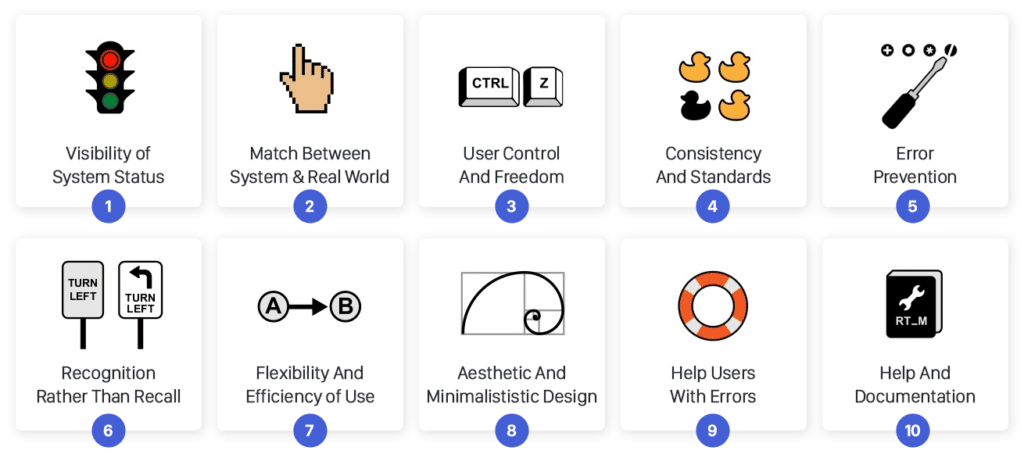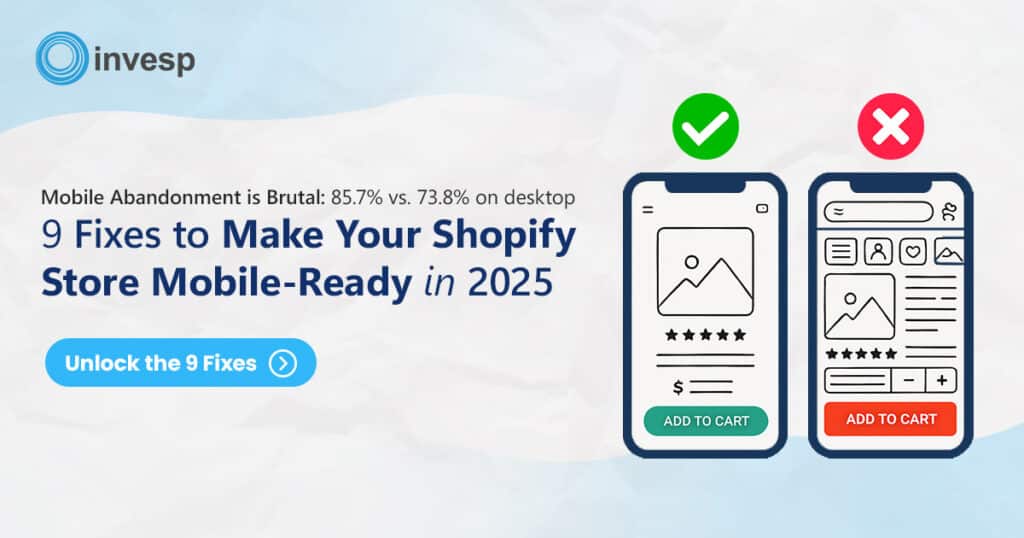Most of the conversion rate optimization work that I see nowadays is an over-architected usability fix deployed as AB tests.
When trying to improve conversions of a website, then there are different levels of items that you need to identify and fix:
- Site bugs
- Site functionality
- Emotional messaging
- Social messaging

Site bugs
These are problems with the site functionality where users are cannot perform a task.
Bugs are categorized at different priorities:
- P1 issues – significant bugs where users are not able to complete a particular task on the site. Think of the site crashing during the checkout process and users have no way to place an order.
- P2 issues – These are also significant bugs; however, users have a workaround to complete a particular task on the site. An example of this is the site not working on a specific old version of a browser; however, the website works on a more current version.
- P3 issues – These are smaller defects. Users can complete a task on the site, but there is a level of annoyance that is associated with the process. An example of P3 is the “sort by” functionality not working on a category page for an ecommerce site.
- P4 issues – These are also minor bugs, examples of these bugs are grammar mistakes on a page.
Obviously, each of these types of bugs will have an impact on the site conversion rate. The more critical the bug is, and the more visitors experience it, the higher its impact on the site’s bottom line.
The website might crash on an older version of chrome, so this typically is classified as a P2 bug. However, if you notice that less than 1% of the site traffic uses that version of chrome, then how critical is it to fix that bug? Is it still a P2 bug or should you downgrade its classification?
Most companies use some sort of a quality assurance process and teams to ensure that their sites are bug-free. CRO firms have the advantage of uncovering bugs on the site because we use analytics to identify both website pages and browsers where visitors are struggling.
I do not discount the impact bugs have on conversions, but I really wonder if uncovering them and spending months fixing them should be a focus area of a CRO firm. Clients are better served when we push (or encourage) them to use quality assurance practices to minimize the number of bugs on the site.
Site functionality
This is an area where the site does not have a bug; however, it behaves in a way that visitors do not expect. Site functionality issues are usability issues uncovered on the site. The 10 usability heuristics by NNG group is an excellent example of this:

Another example as the placement of CTAs on a page. There are instances where a user is ready to convert, however, the CTA is hidden below the fold which can reduce conversions.
Bugs and site functionality issues are tangible, our next two categories are about identifying psychology related issues.
Emotional messaging
How does your site make users feel as they browse through it? How does your product or service make users feel when they convert or when they use it? Every element of the campaigns that drive visitors to the site,
and every element on the website (design, colors, copy, flow, etc.) participates in creating a moving emotional image in the mind of visitors.
Social messaging
How is the user-perceived when he uses your site by his social circle? How is the user-perceived socially when he buys your product or service?
As we grow as a society more socially conscious, the impact of social messaging associated with buying a particular product increases.
Both emotional and social messaging impact on the bottom line goes beyond the site. Think of buying the latest model of an iPhone. There is a lot of excitement (emotional factors) that users will have before even going to Apple’s site to place an order. The same user might also be getting the new iPhone because it is important for him to be seen carrying the latest model amongst his peers (social factors).
Each of the four categories will have an impact on the site conversion rate. But their impact varies. If a bug stops visitors from completing the checkout process, then fixing it will definitely increase the site conversion rate. But shouldn’t the client QA team have discovered this bug? And is the client paying the CRO company the hefty fees to uncover site defects?
In my experience, fixing functional or usability issues on the site will improve conversions. However, we are not talking about substantial increases in conversion rates. Fixing usability issues on the website might give you 5 or 10% uplift in conversion rates.
If you are looking for a more meaningful impact, then you must focus on fixing the emotional and social aspects of the site.
Most CRO firms focus their work on the first two categories (bugs and site functionality). As a result, most of the AB tests are merely tweaking site templates and moving elements around screens.
So, why don’t CROs focus on emotional and social issues?
The mirage of the low-hanging fruit:
Many clients start conversion optimization projects thinking that the CROs can uncover a bunch of low-hanging fruits. In the client’s mind, low-hanging fruits are equal to quick wins. Quick wins mean quick cash.
The client starts CRO work expecting miracles, and the CRO firm gets a paying client.
So, what do CROs do to satisfy the need for quick wins? They naturally gravitate towards finding bugs and usability issues. These give a quick bump, but it is too small to have a significant and sustainable impact on the bottom line. Things are okay for the first few months, but eventually, the client starts getting anxious because there are no significant uplifts in conversions.
Bugs and functional items have a place in CRO, but they are mostly tactical. And if your whole plan revolves around them, then you will be disappointed.
Social and emotional messaging is hard:
Uncovering bugs and site functionality is light-years easier compared to social and emotional messaging. I recall training my 7th-grade daughter to use Google Analytics to uncover which browser versions have issues on the site. You can develop a step-by-step playbook and train junior staff to discover bugs and usability issues on the site.
Uncovering emotional and social problems is a tough skill to master. Coming up with solutions to fix emotional and social issues is even harder to learn and takes years of training.
Lazy marketers:
Growth-hacking is trendy.
The line between a marketer and a developer is blurred every day. More marketers are trying to use data when designing campaigns. More developers are turning into marketing.
Not a day goes by without reading about data-driven marketing.
Most marketers are not good with data. They have very little interest in digging deep into statistics. Their “data-driven” abilities are superficial. On the other end, the developers turned marketers are good with data. They can dig deep and produce impressive analysis. Their marketing skills, however, are superficial.
Real marketing is hard. It is hard because it tries to decipher human psychology. Authentic marketing is hard because it attempts to come up with campaigns that influence the human mind. There is no step by step guide to understanding the algorithm of the human brain.
Data analysis is also hard. Carefully analyzing data, knowing what you are really looking at, and setting aside your biases is hard. If you are not careful, you can always find a pattern in the data that supports your initial assumptions.
So, how do many marketers nowadays deal with the hard realities of marketing? They focus on the superficial and leave the strategic issues for a later time.
I do not discount the value of data. I am, after all a computer science graduate, and one of these developers turned marketer a long time ago. What we see most of the time is not data-driven marketing. It is software-influenced marketing. There is a massive gap between the two.
Frequently Asked Questions About Conversion Optimization
1. What is the most important thing to consider across conversion rate optimization?
The most crucial aspect of conversion rate optimization is understanding your audience. After all, your target audience is at the heart of every successful optimization strategy. To achieve higher conversion rates, you must conduct thorough research to comprehend your audience’s needs, preferences, pain points, and behavior. This knowledge allows you to tailor your website, content, and offers to meet their expectations, ultimately driving more conversions.
2. What is the importance of conversion optimization?
Conversion optimization is the cornerstone of online success. It’s not just about increasing the number of conversions; it’s about maximizing the value you get from your existing traffic. When done effectively, CRO can boost your revenue, improve your ROI, and enhance user satisfaction. It’s a constant process of refining and improving your online assets, ensuring that every visitor has a better chance of converting into a customer, subscriber, or lead.
3. What are the steps of conversion optimization?
The process of conversion optimization typically involves several key steps:
a. Research: Understand your audience, their pain points, and your competitors.
b. Define Goals: Clearly define what constitutes a conversion for your website.
c. Analyze Data: Use tools like Google Analytics to identify bottlenecks in your conversion funnel.
d. Hypothesize: Formulate hypotheses about what changes could improve conversion rates.
e. A/B Testing: Implement and test changes to determine their impact on conversion rates.
f. Iterate: Continuously refine your website based on test results.
g. Monitor: Keep a close eye on your website’s performance and adapt as needed.
4. What are the factors affecting conversion rate optimization?
Several factors influence conversion rate optimization:
a. Website Design: An intuitive and user-friendly design can have a significant impact on conversions.
b. Content Quality: Engaging, relevant, and persuasive content is crucial.
c. Page Load Speed: Slow-loading pages can deter visitors from converting.
d. Trust Signals: Trustworthy elements like testimonials, security badges, and reviews build confidence.
e. Mobile Optimization: Ensure your site is mobile-responsive for a seamless experience.
f. Call to Action (CTA): Well-crafted CTAs can drive conversions.
g. A/B Testing: Experimenting with different elements to find what resonates best with your audience.
h. Customer Feedback: Listening to and acting on customer feedback can uncover conversion barriers.
5. How do you increase conversion rates?
Increasing conversion rates involves a combination of strategies:
a. Optimize Landing Pages: Ensure landing pages are tailored to specific user intent.
b. A/B Testing: Continuously test variations to find what works best.
c. Improve Site Speed: Faster load times lead to higher conversions.
d. Enhance Content: Create compelling, informative, and relevant content.
e. Simplify Forms: Reduce friction by minimizing form fields.
f. Build Trust: Use trust signals like security badges, reviews, and guarantees.
g. Personalization: Tailor experiences based on user behavior and preferences.
h. Responsive Design: Ensure your site works flawlessly on all devices.
i. Monitor Analytics: Continuously analyze data to identify areas for improvement.



